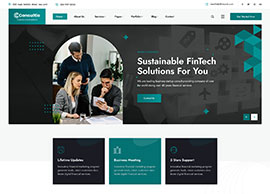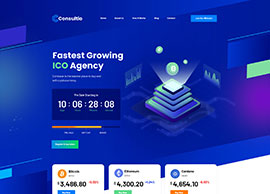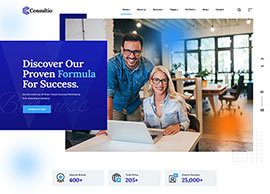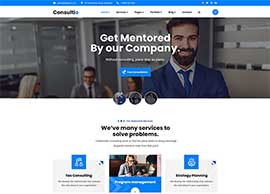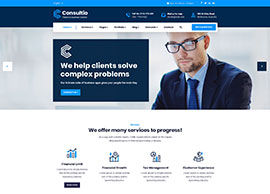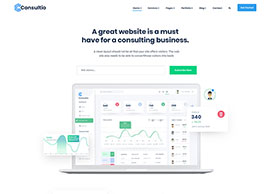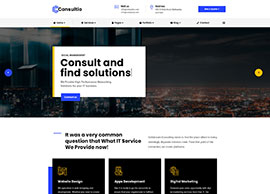As the technology landscape continues to evolve, software testing stands at the forefront of ensuring the reliability and quality of digital products. For graduates entering the field of software testing in the Australian IT sector, staying ahead of emerging trends is crucial. In this blog, we will explore the upcoming trends in software testing for 2024, offering valuable insights for freshly graduated students and early professionals seeking to carve a niche in the industry.
- QAOps: Bridging the Gap Between QA and Ops
The evolution beyond DevOps, QAOps integrates Quality Assurance (QA) and IT Operations (Ops) in software development. This approach ensures faster market delivery without compromising quality by streamlining collaboration through Continuous Integration/Continuous Deployment (CI/CD) pipelines. Test engineers and developers work together throughout the Software Development Life Cycle (SDLC), transforming the traditional role of testers into integral contributors.
1.1: Integration into CI/CD Pipeline
Example: A leading e-commerce platform seamlessly integrates QAOps into their CI/CD pipeline, allowing for continuous testing throughout the development process. This ensures that any defects are identified and addressed early, preventing potential bottlenecks in the release cycle.
1.2: Collaboration Enhancement
Example: A multinational software company promotes collaboration between QA professionals and developers through QAOps. Daily stand-up meetings and joint sprint planning sessions foster communication, leading to faster issue resolution and improved product quality.
1.3: Tester’s Evolving Role
Example: A financial services institution empowers QA professionals with a comprehensive understanding of QAOps, expanding their role beyond traditional testing. Testers actively participate in design discussions, ensuring that quality considerations are embedded from the project’s inception.
- Scriptless Test Automation: A Revolution in Testing Efficiency
A revolutionary approach to testing efficiency, Scriptless Test Automation leverages AI and ML algorithms to create self-healing mechanisms. These user-friendly tools reduce the need for manual scripting, providing faster results, decreasing maintenance costs, and bridging the gap for individuals with varying technical expertise. It’s not just a trend; it’s a critical practice to keep pace with the demands of modern software development.
2.1: AI and ML Integration
Example: A healthcare software provider adopts scriptless test automation tools that leverage AI and ML algorithms. The self-healing mechanism automatically adjusts test scripts, reducing the need for manual intervention and enabling testers to focus on critical scenarios.
2.2: User-Friendly Tools
Example: A telecommunications company embraces user-friendly scriptless automation tools to empower testers with varying technical backgrounds. The intuitive interfaces and drag-and-drop functionalities enable testers to create robust automated tests without extensive programming knowledge.
2.3: Time and Cost Savings
Example: A logistics solution provider witnesses significant time and cost savings by implementing scriptless test automation. The reduction in script maintenance efforts allows the QA team to allocate more time to exploratory testing, ensuring comprehensive test coverage.
- Robotic Process Automation (RPA): Enhancing Efficiency Across Industries
Reshaping routine software tasks, RPA is making waves in finance, banking, healthcare, and customer service. With a projected global market value of USD 3.4 billion by 2027, graduates entering the workforce should familiarize themselves with RPA tools. These tools contribute to cost reduction, improved quality, and enhanced operational controls, opening up new avenues in the Australian IT sector.
3.1: Cross-Industry Adoption
Example: A major bank utilizes RPA tools to automate routine tasks, such as data entry and report generation. This cross-industry adoption showcases the versatility of RPA in optimizing processes and improving operational efficiency.
3.2: Market Growth
Example: A healthcare organization invests in RPA to streamline administrative processes. The projected growth of the RPA market, as indicated by the Research and Markets survey, underscores the increasing recognition of RPA’s transformative impact across sectors.
3.3: Cost Reduction and Quality Improvement
Example: A customer service-oriented company leverages RPA to automate repetitive customer queries. This not only cuts operational costs but also ensures consistent and high-quality responses, enhancing the overall customer experience.
- Shift Left Testing: Paving the Way for Early Detection
Addressing challenges in traditional software development life cycles, Shift Left Testing advocates for performing testing activities earlier in the development life cycle. This approach facilitates proactive collaboration between software development teams, offering the opportunity to detect and address bugs early in the SDLC. QA professionals, working in tandem with development and product teams, play a pivotal role in reducing time-to-market and delivering optimal outcomes.
4.1: Proactive Collaboration
Example: A software development firm adopts shift-left testing to encourage proactive collaboration between development and QA teams. By involving testers in the early stages, potential issues are identified and resolved before they escalate, resulting in faster delivery times.
4.2: Time-to-Market Improvement
Example: An agile-oriented startup embraces shift-left testing methodologies, reducing the time-to-market for their innovative products. Early bug detection allows for swift resolutions, ensuring that the final product meets customer expectations.
4.3: Cost Savings
Example: A manufacturing company implements shift-left testing to save costs associated with late-stage bug fixes. By addressing issues in the early phases of development, the company minimizes the financial impact of extensive rework.
- Selenium 4: Empowering Agile and DevOps Practices
An open-source test automation tool widely adopted by Agile and DevOps practitioners, Selenium continues to evolve. The release of Selenium 4 in August 2022 introduces features like relative locators, Chromium driver support for the Edge browser, Selenium Grid, and Docker support. Graduates are encouraged to master Selenium, positioning themselves to thrive in organizations embracing agile testing methodologies.
5.1: Features of Selenium 4
Example: An e-learning platform upgrades to Selenium 4 to take advantage of features like relative locators and Docker support. This enhances the efficiency of their test automation suite, aligning with their agile development practices.
5.2: Cross-Browser Compatibility
Example: A global tech company relies on Selenium 4 for its cross-browser compatibility testing. The open-source nature of Selenium allows them to adapt swiftly to changes in browser technologies, ensuring a seamless user experience across platforms.
5.3: Adoption in Agile Environments
Example: A software consultancy firm advises its clients to adopt Selenium 4 in their agile environments. The tool’s flexibility and ability to integrate with various programming languages make it a preferred choice for organizations committed to agile and DevOps methodologies.
- Digital Immune System: Safeguarding the Digital Landscape
In the face of evolving cybersecurity threats, the Digital Immune System emerges as a critical component of software testing. Utilizing advanced technologies such as artificial intelligence, machine learning, and behavioral analytics, this system acts as a comprehensive defense mechanism against cyberattacks, data breaches, and malicious activities. As graduates enter the workforce, a fundamental understanding of the Digital Immune System becomes essential to contribute to the protection of digital infrastructure and ensure the integrity of digital interactions.
6.1: Advanced Technologies in Action
Example: A government agency employs a Digital Immune System equipped with AI, machine learning, and behavioral analytics to protect critical infrastructure. The system dynamically adapts to emerging threats, ensuring a resilient defense against cyberattacks.
6.2: Protection of Sensitive Information
Example: A cloud service provider prioritizes the implementation of a Digital Immune System to safeguard sensitive user data. This comprehensive defense mechanism instills trust in users, assuring them that their information is secure within the digital ecosystem.
6.3: Real-Time Threat Detection
Example: A financial institution relies on a Digital Immune System to detect and respond to cybersecurity threats in real-time. This proactive approach minimizes the impact of potential breaches, maintaining operational continuity and protecting both customer and institutional assets.
Conclusion
The software testing landscape is evolving, and graduates entering the Australian IT sector must be prepared to embrace these emerging trends. From the integration of QAOps to the efficiency of Scriptless Test Automation, the industry demands professionals who can adapt to the changing dynamics of software development. By staying abreast of these trends, graduates can position themselves not only as testers but as integral contributors to the continuous improvement of software quality and innovation. As you embark on your journey in the software testing realm, remember that knowledge and adaptability are your greatest assets in this ever-evolving field.
About Full IT
Full IT Solutions is Canberra’s oldest and value-for-money Job-Ready Training Program (JRTP). Our strong focus on equipping students and job-seekers with “in-demand” technical skills under the mentorship of our certified professionals comprises working on live projects, learning all the necessary technical proficiencies to become job-ready besides enhancing their academic prowess. We are an Australian-based company, dedicated to delivering IT services on budget and on schedule, all while employing a local workforce. We are not just committed to growth but also to nurturing the next generation of IT and marketing professionals in Australia.
In addition to our web development training program, we offer a wide array of IT training and services, including Web Development, Data Analysis and Visualization, Cloud Consulting, Custom Application Development, Digital and Social Media Marketing, Graphic Designing and Printing, IT Consulting, Setup and Troubleshooting, and Data Backup and Disaster Recovery.
Sources: testingxperts, softwaretestingmaterial, LambdaTest, apriorit, softwaretestingweekly







